A resounding crack occurred at midnight, followed by an earth-shaking crash, overwhelming the sounds of the rushing waters of Bradley Fork and the wind-buffeted tent. It was clearly a tree fall, perhaps right in the Smokemont Campground. The temperatures were still in the 30s the next morning as Mike, Jim, Joel and I headed up to Newfound Gap for our first full day hike.
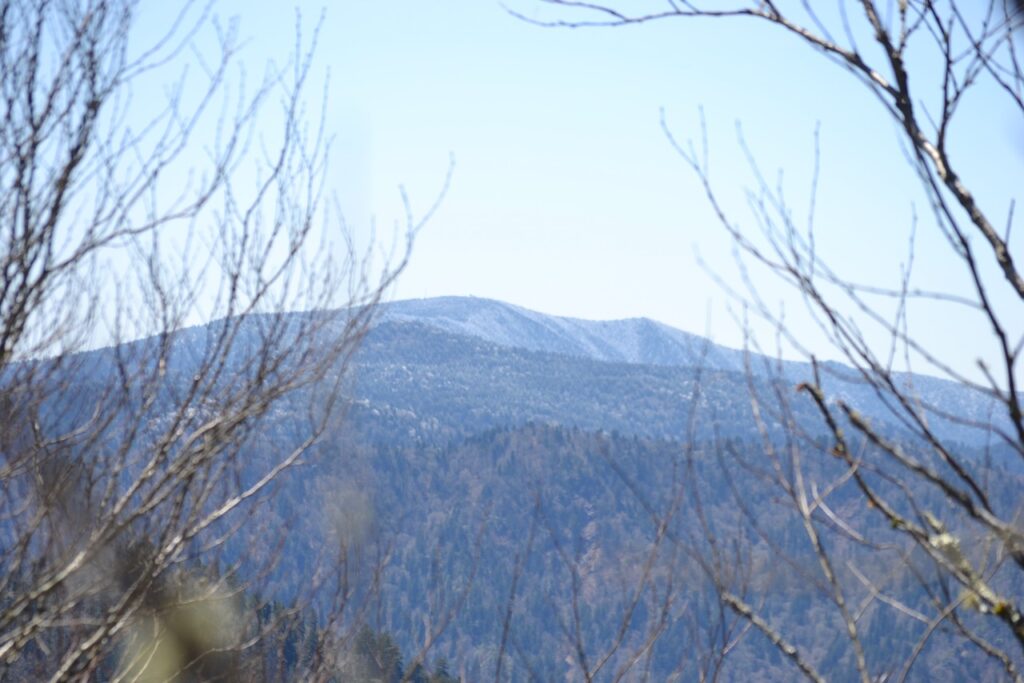
In the distance a ridge shone with its ice-covered evergreens, and we were headed to that altitude. The wind was stiff and cold as we started up the Appalachian Trail, and water on the trail was frozen solid. Four younger hikers were heading back, finding the icy trail in places treacherous. I heard a bang behind me at one point, and Jim had slid and crashed on his butt, but was OK. On the sides of the trail hoarfrost made crystalline patterns, and ice cycles hung down from rock formations. Later on in the day, with warming temperatures, we stopped to watch water beginning to flow through ice cycles (video credit Jim Smolen) as if small bodies were transported in columns.
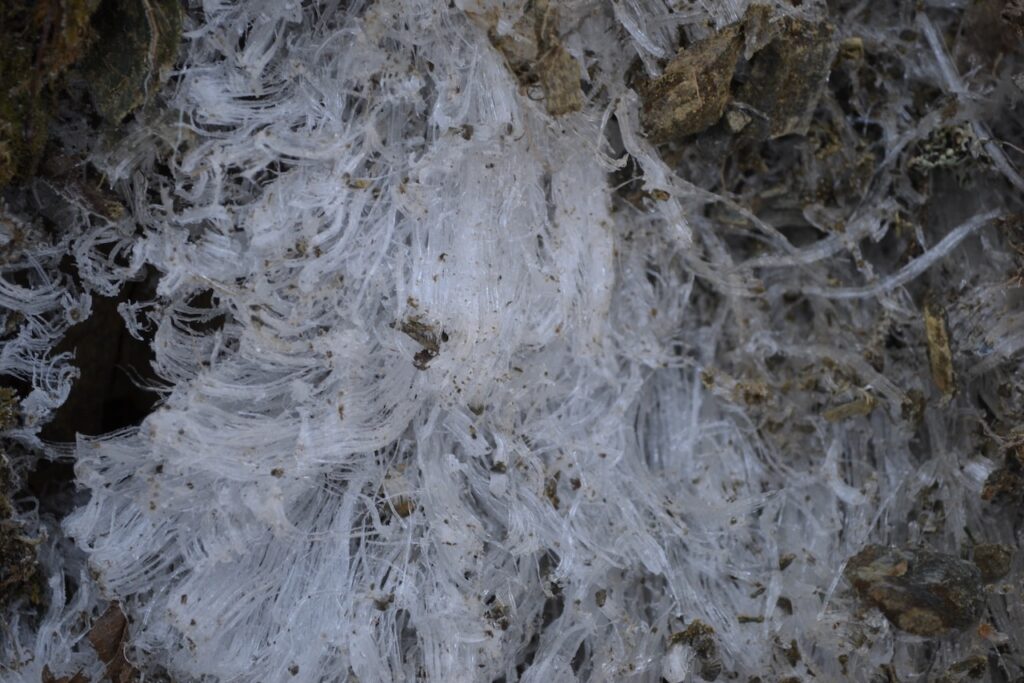
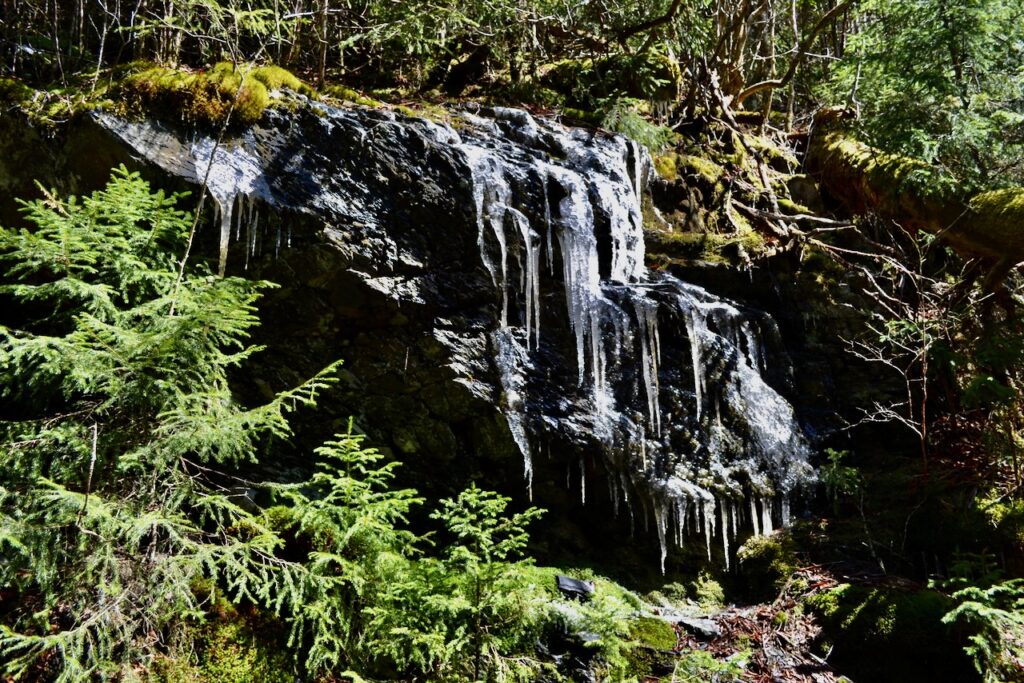
Another sound was my shoes crunching on the rocks underfoot. A recent piece in Smokies Live, Taking a walk across ancient land, by former GSMNP ranger Butch McDade, utilized this experience to discuss the incredible geology of the Smokies. The rock formations everywhere were objects for a deeper consideration..
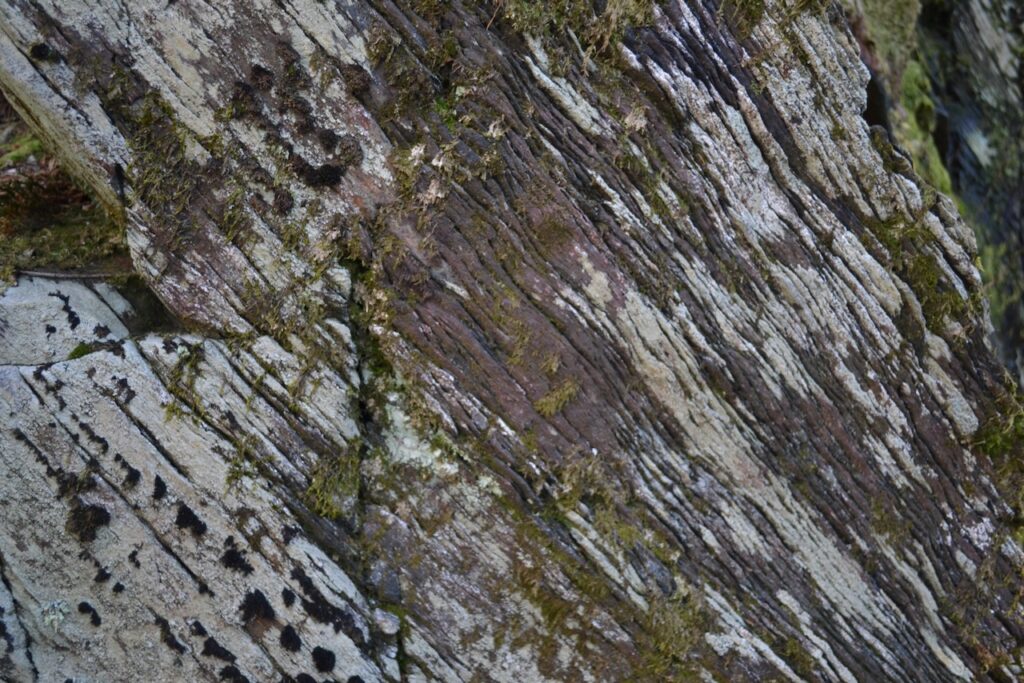
At 2.7 miles from Newfound Gap we hit the junction with the Boulevard Trail, and our planned hike up to Mount LeConte. We agreed on keeping partners on our hike, and our faster hikers Joel and Mike sped ahead as Jim and I set our own pace. The Boulevard trail gently descended for a while before beginning its steady climb toward LeConte. We were up in the spruce-fir forest, and encountered a rich world of mosses.
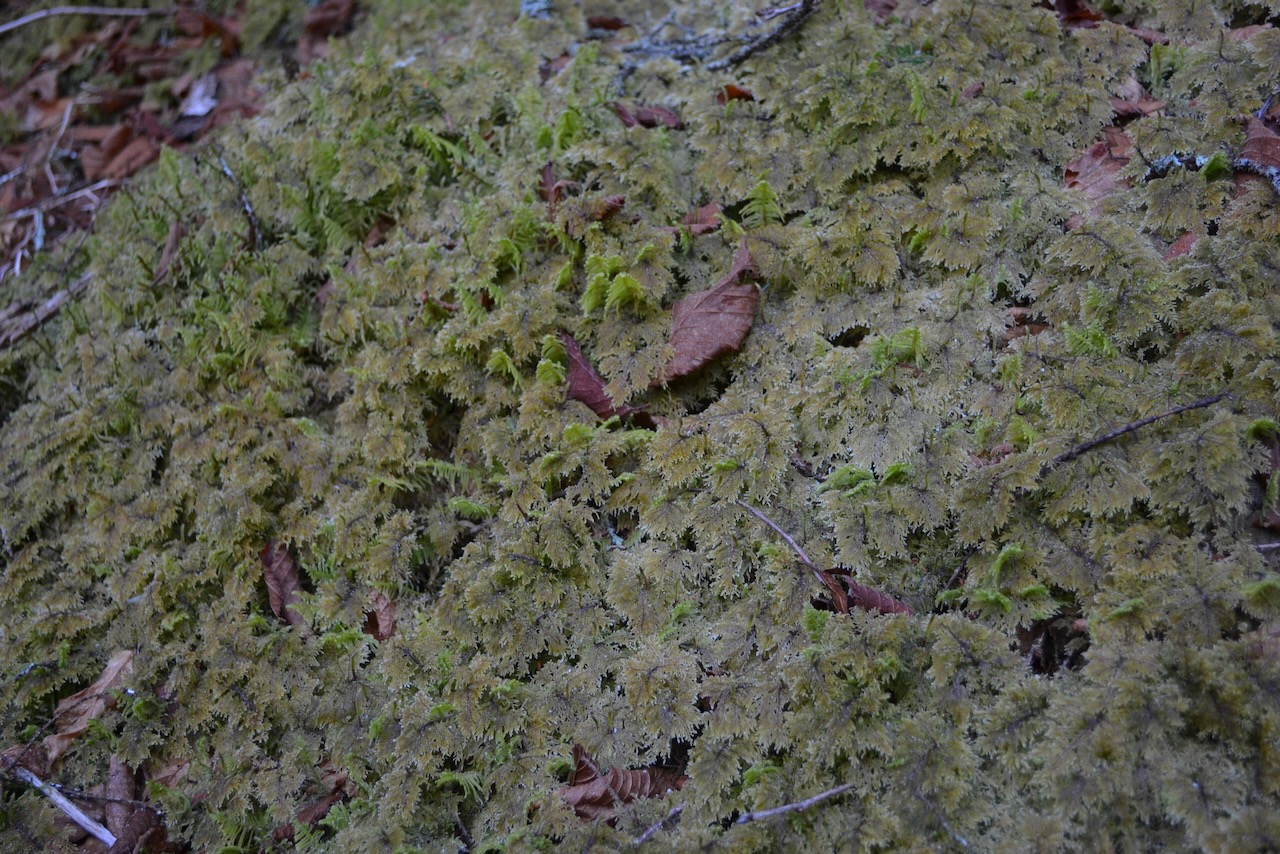
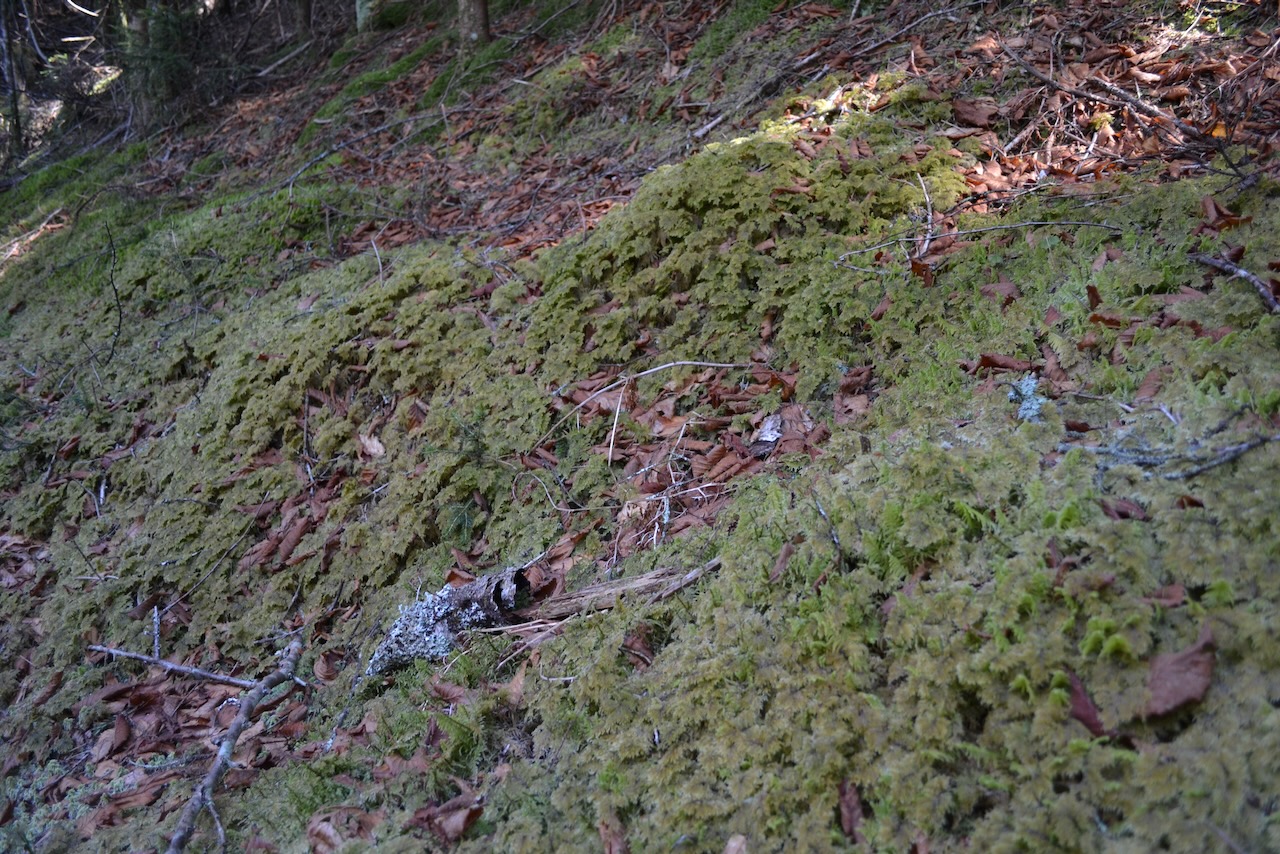
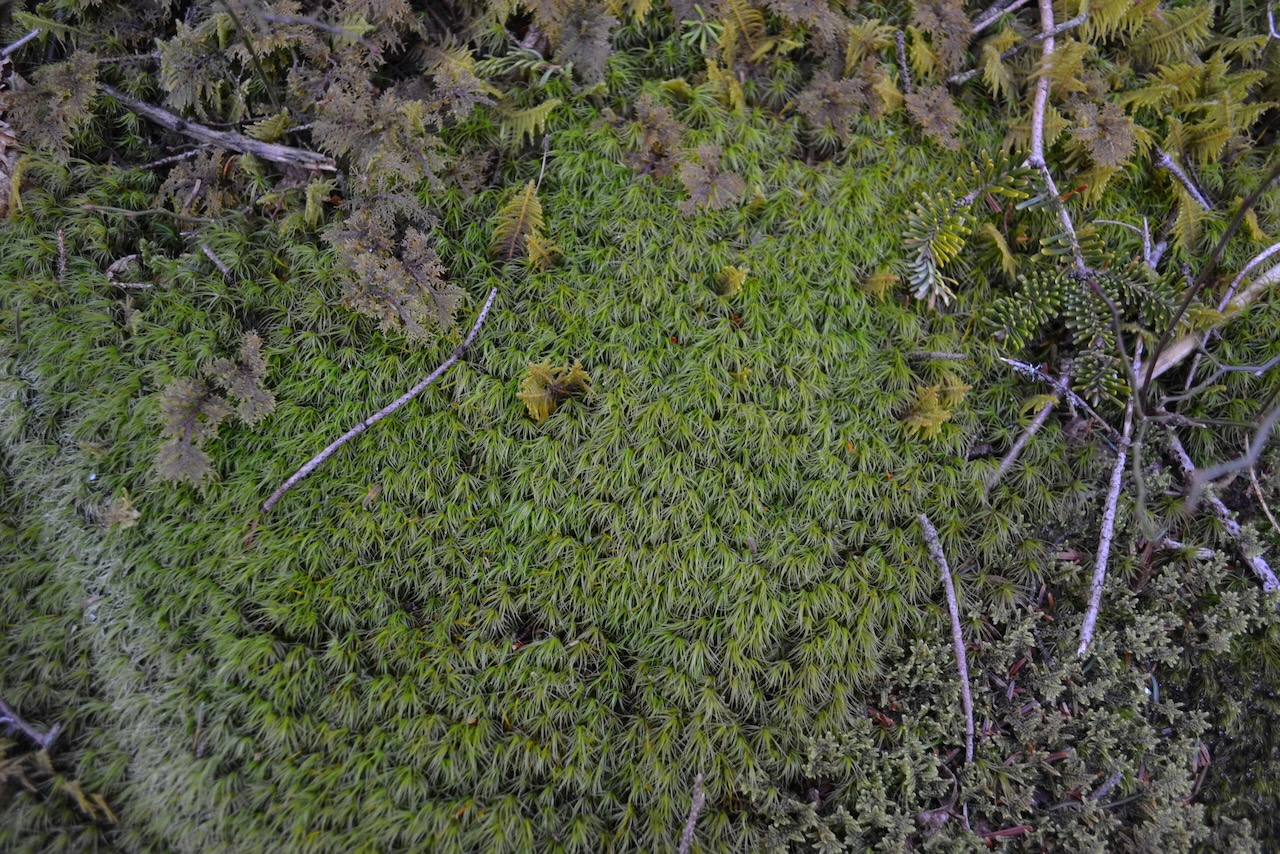
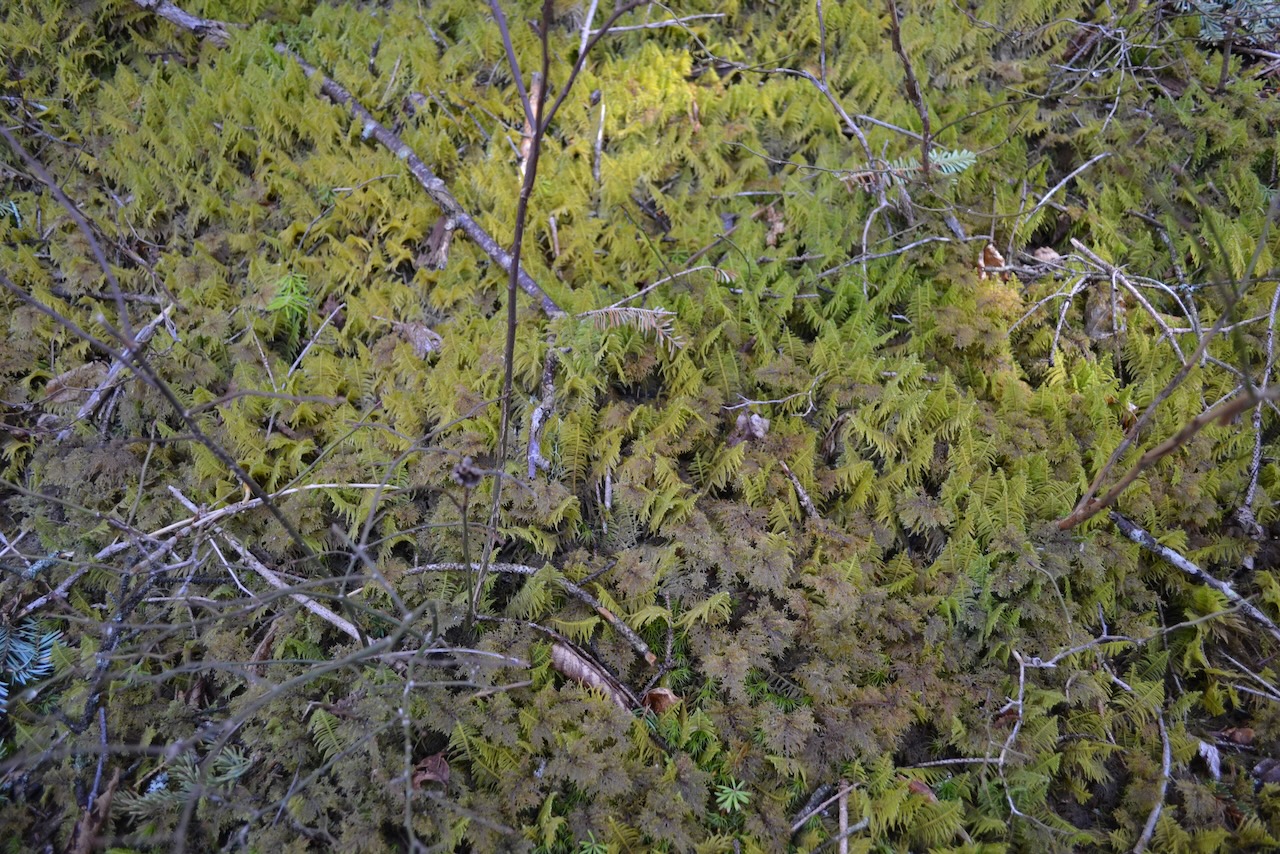
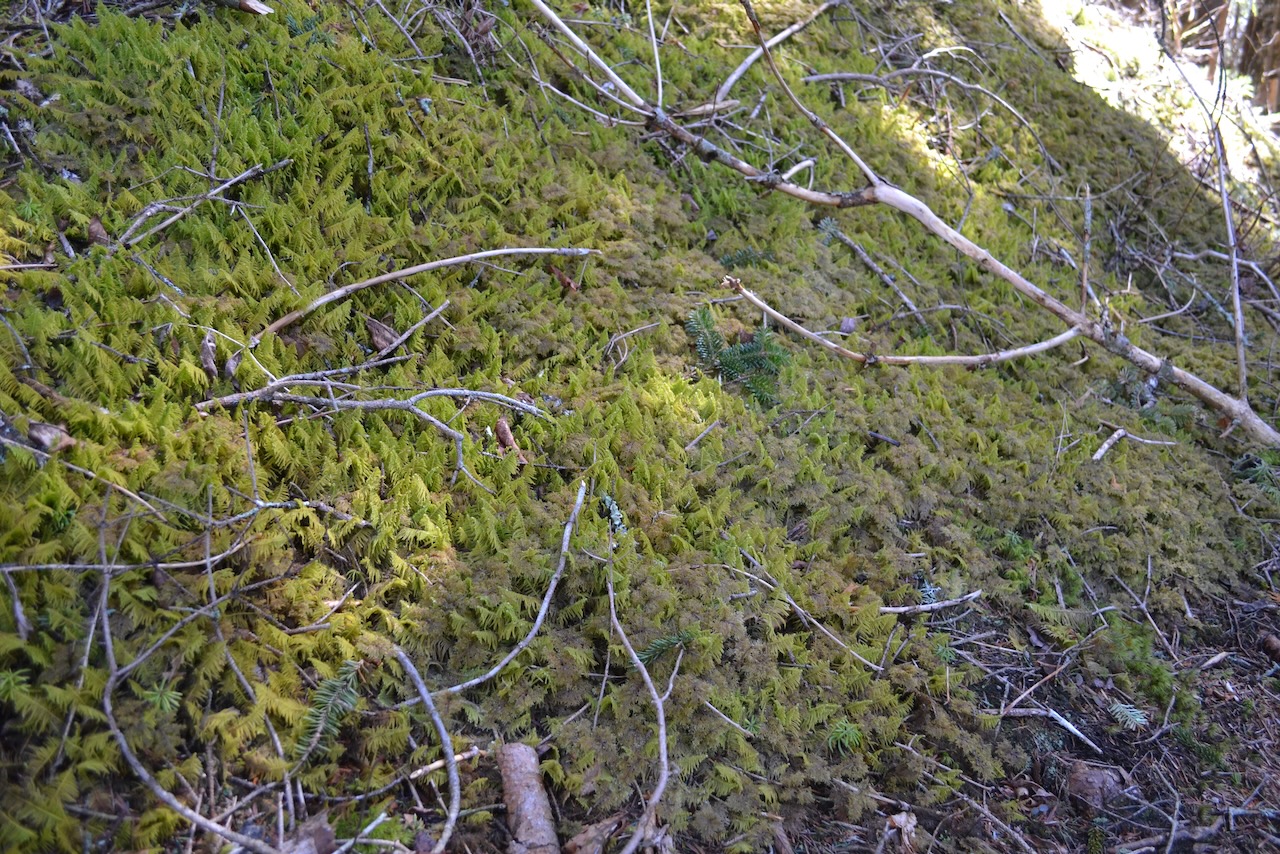
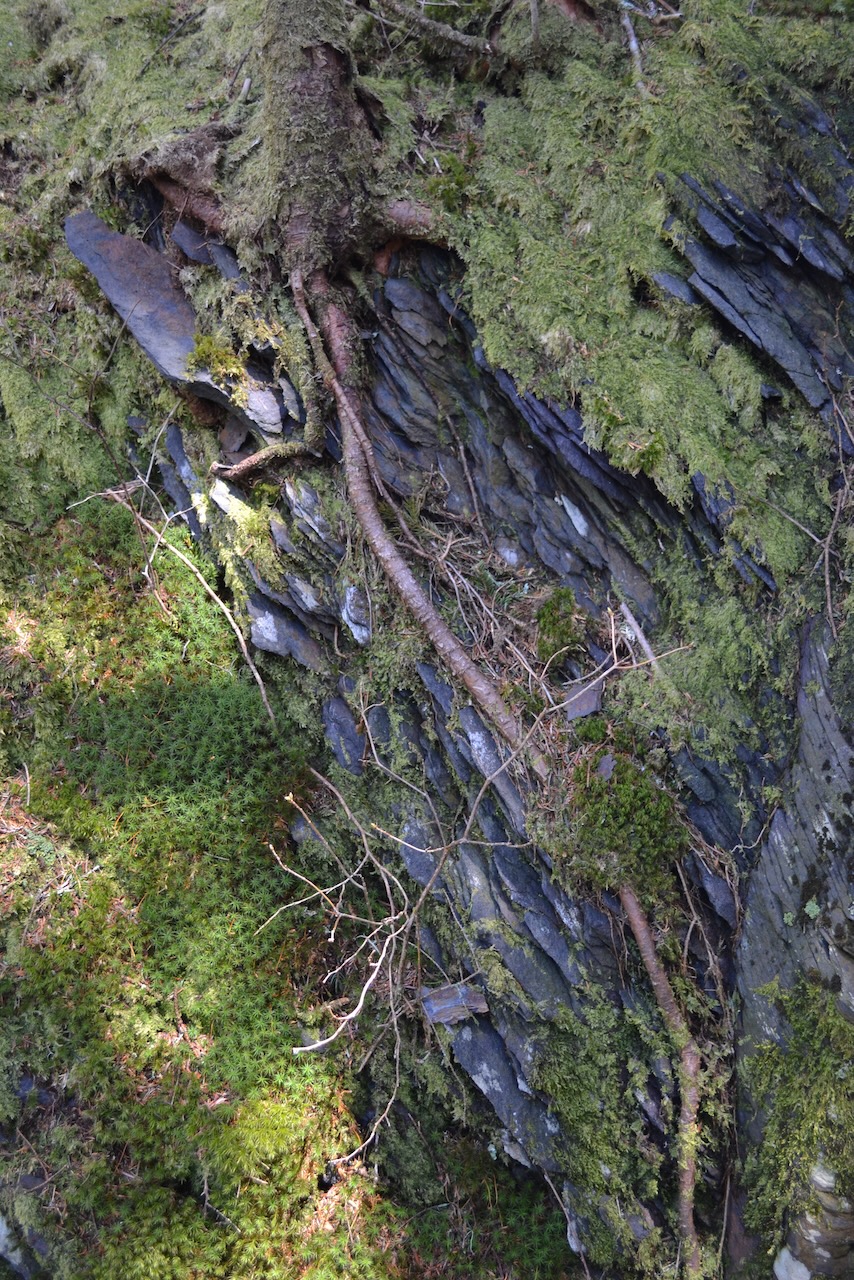
Besides taking the time to look at mosses and the other elements in this rich forest, Jim and I decided to turn back before reaching LeConte. There was no disappointment – we had been there before, and a judicious turnaround seemed the right thing to do. We inspected other things – a red salamander (according to Joel, a spring salamander), several major tree uprootings along the trail, and the iconic Smokies ridgetop views. Wind, plentiful rains, and ice have been the elements contributing to the ongoing erosion of the Smokies, (according to a geology brochure, two inches every 1000 years.)
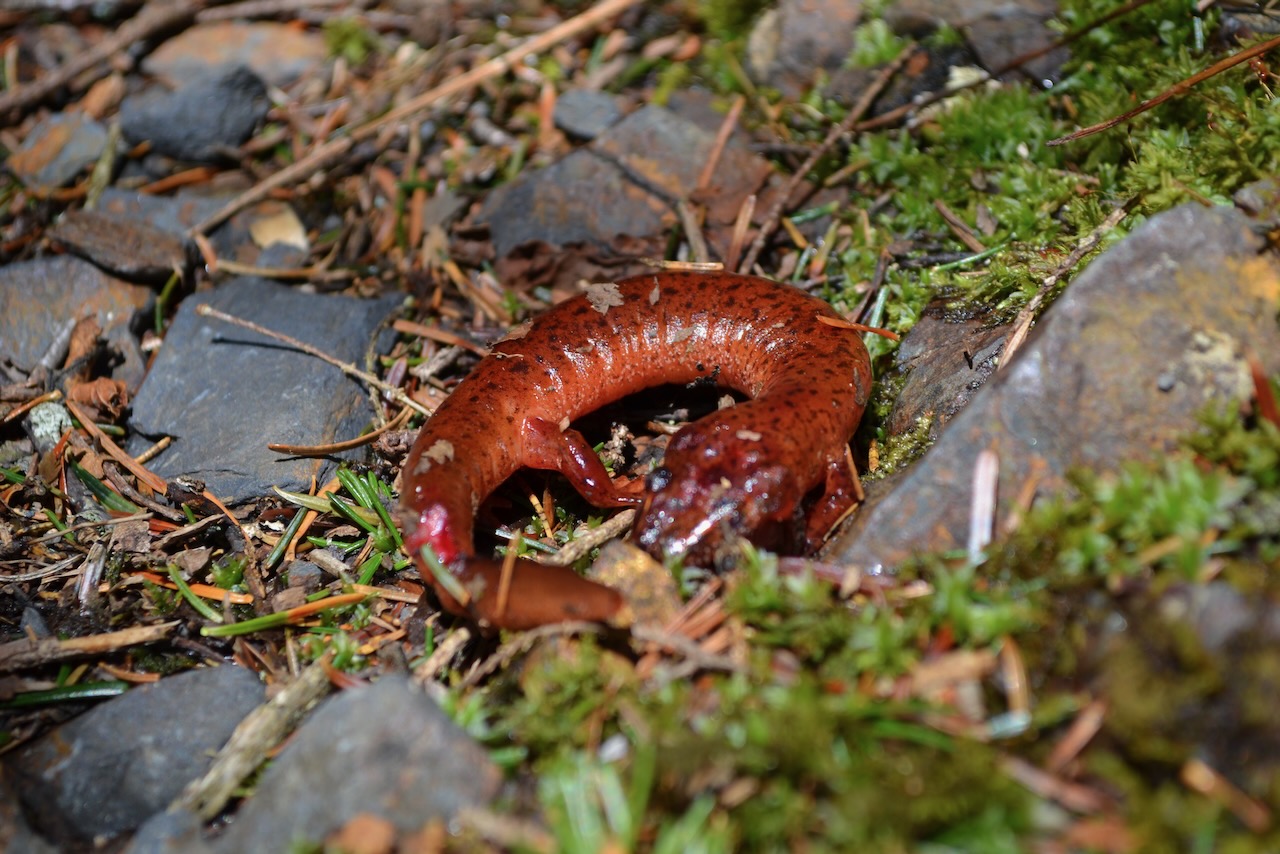
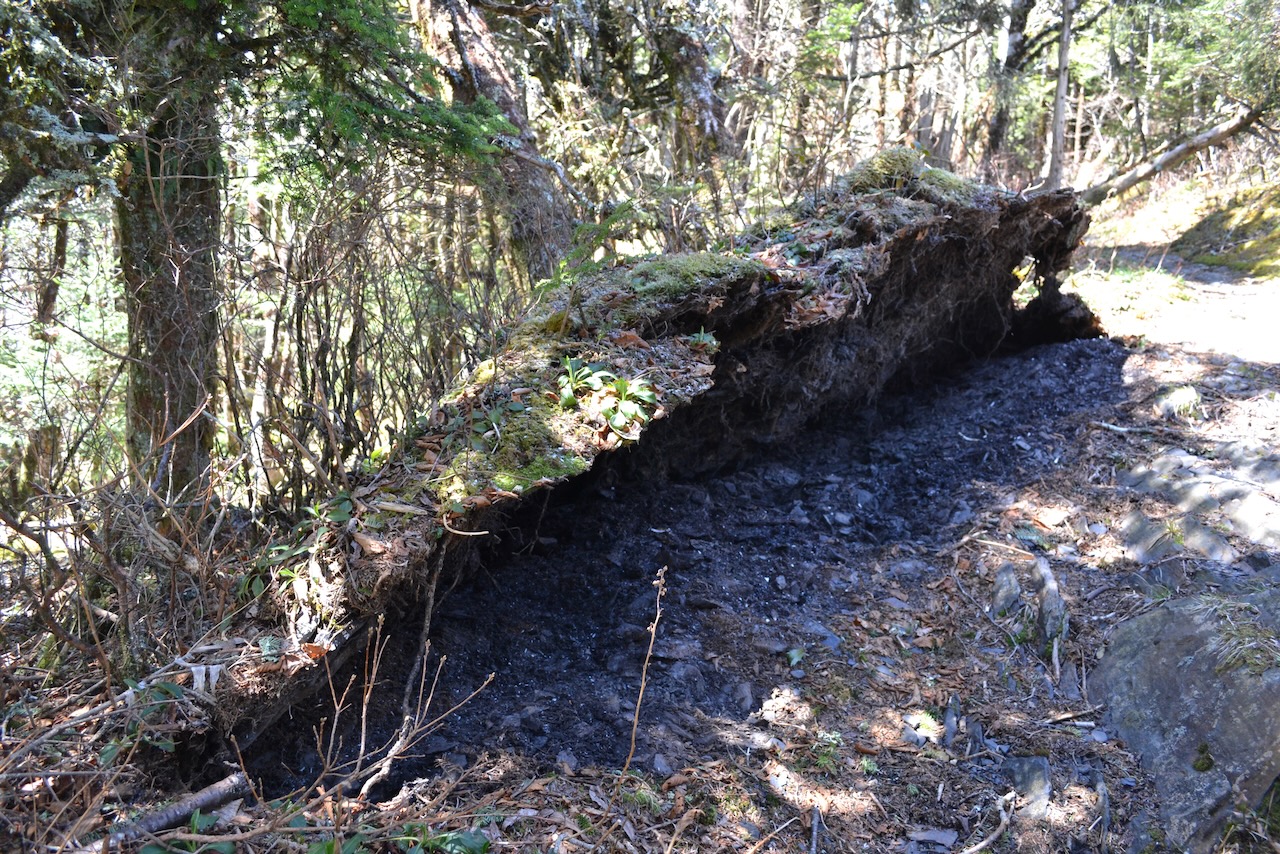
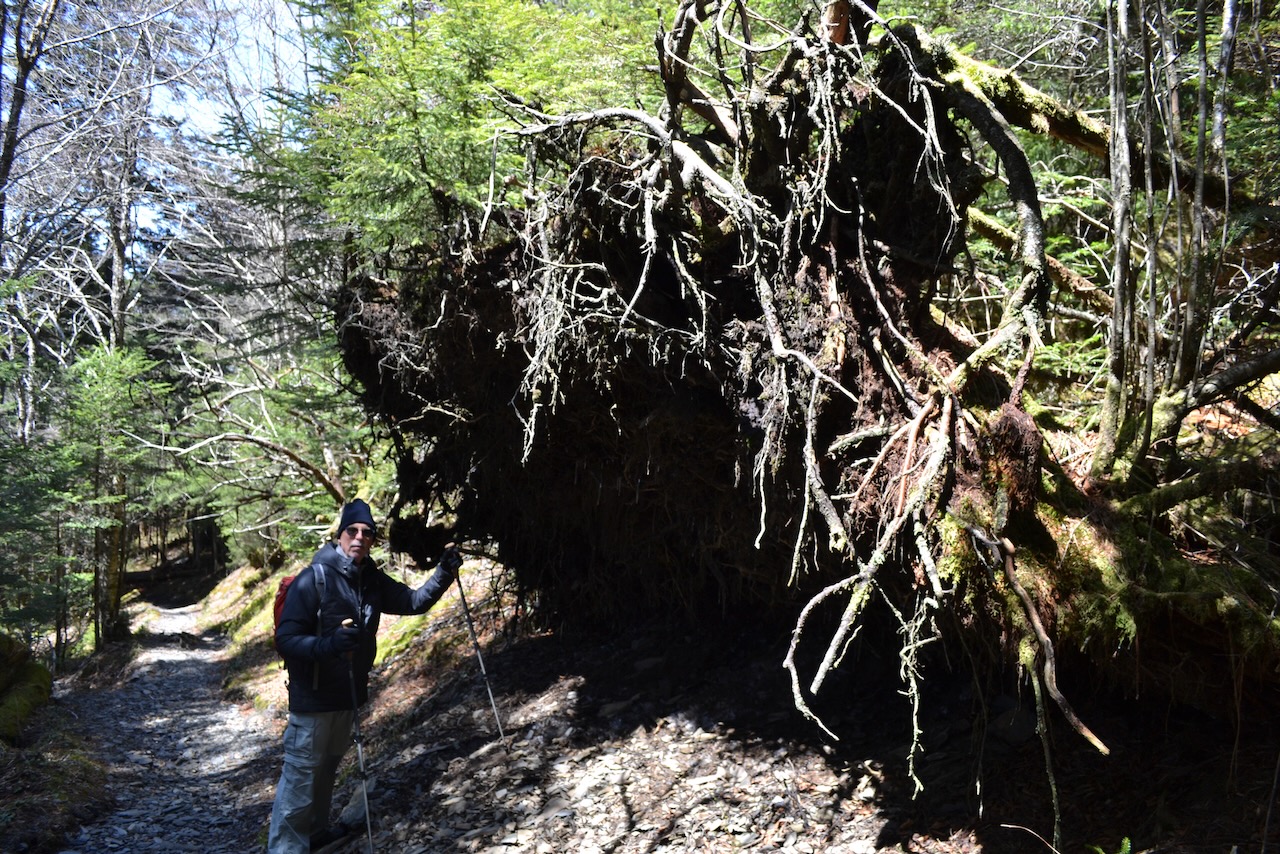
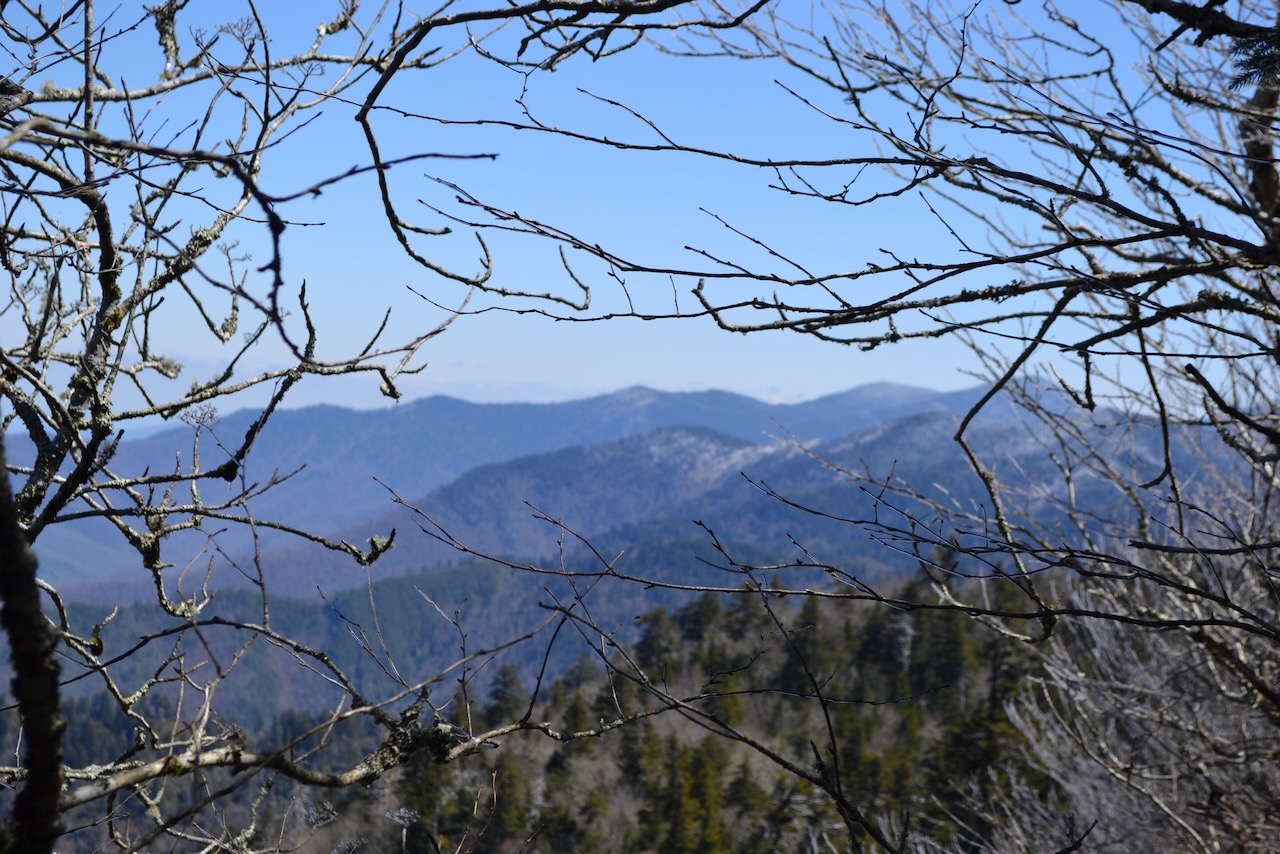
Jim and I also took the time to speak to fellow hikers. We saw none on the Boulevard Trail, but there were plenty on the AT. In the morning on our way up we ran across several thru-hikers going south. We had already heard a loud “Heh Heh” greeting our friends ahead, and we received the same treatment from the lead hiker. Expressed with manic energy, she described themselves as “Flipfloppers”, going the opposite way from the main body of thru-hikers. They had already covered 700 miles, and after reaching Springer Mountain in Georgia they planned to finish the remainder up north. Soon thereafter, another distance hiker proclaimed her destination as “Hot Coffee Town”, planning to meet up with a friend and her parents. As we retraced our steps on the AT, we ran into a steady stream of thru-hikers pushing ahead to their next stop – the Icewater Springs Shelter. Most trudged on without breaking pace, but one hiker with the goal of reaching Mount Katadin stopped to chat. We wondered what his night was like up at elevation. He stayed at the Double Spring Gap shelter, and estimated the temperature at 20. He also had struggled with the icy trail, and reported going down twice but without injury. He had started slowly on his thru-hike, covering 6-7 miles per day initially but doubling that as he acclimated to the physical challenge.
We encountered and interacted with a range of hikers on trails throughout the week besides the thru-hikers on the AT. We spoke with a lone hiker on Kephart Prong Trail from Alabama who was staying a month in Wears Valley and hiking daily, his wife providing his transportation support. Another backpacker shared that he had just retired, and after five unsettling days at home realized he needed to do something. So he took off on a five day backpacking trip in the Smokies (and was feeling better.) Toward the bottom of the trail, we talked to four adult women accompanied by four kindergarten-aged girls embarking on their first overnight camping trip in the backcountry (Kephart Shelter). We wished them well, and later wondered about their crossing the log bridges and their night in the shelter. Another all male group, a Vermont father with his three sons, were excited (except for the father) to hear about the large black snake we had seen, and to view the photo in my camera.
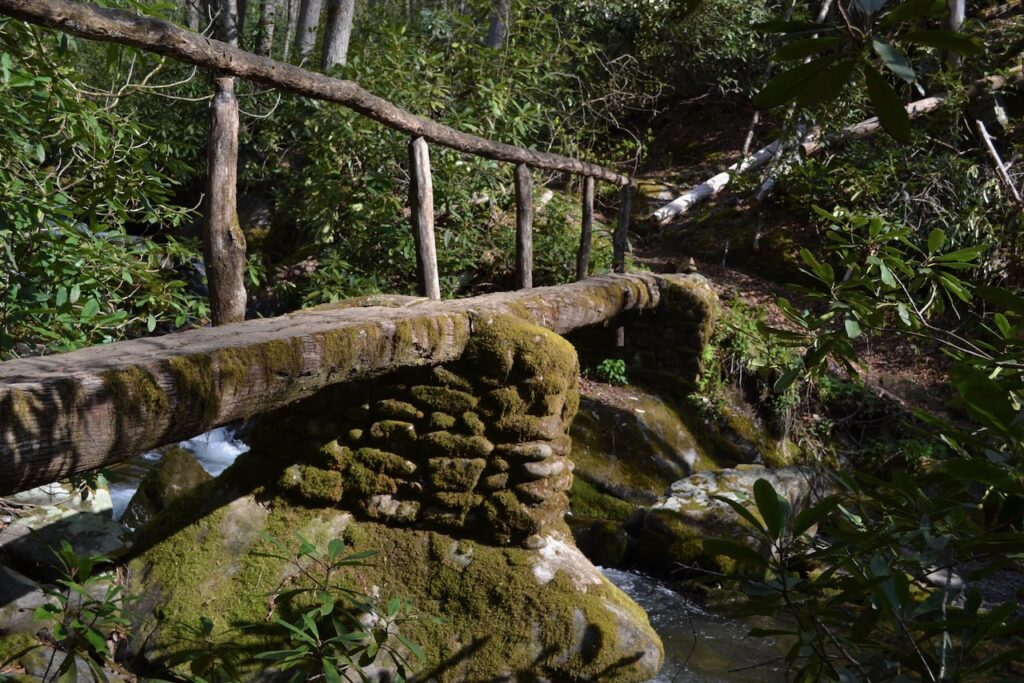
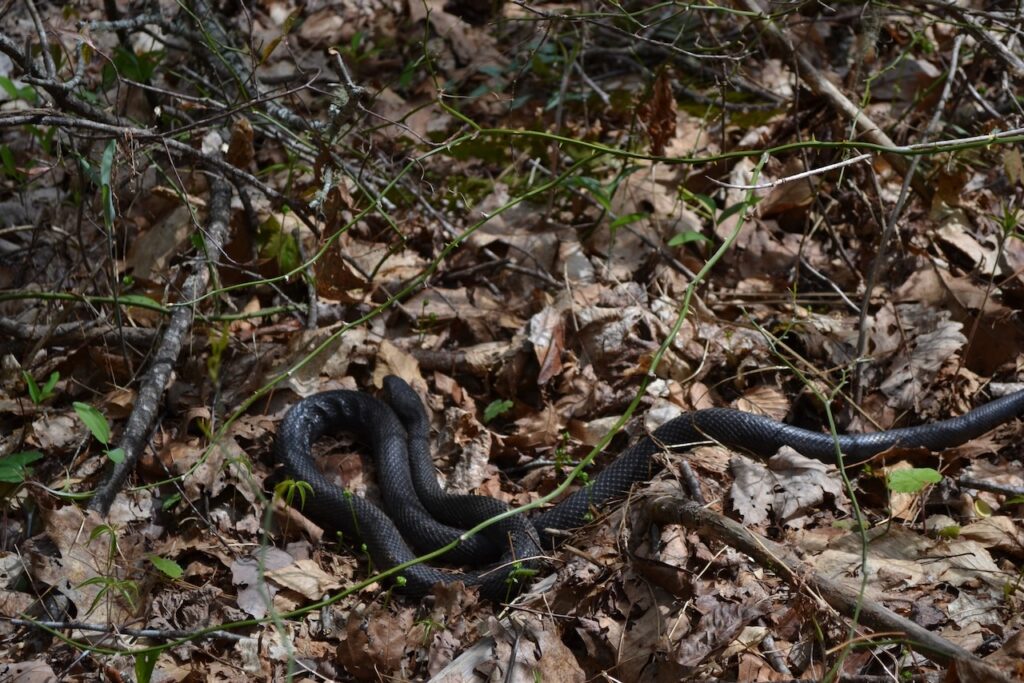
Smokemont Campground provided our base camp for the week, and a community of people. We chatted with fellow campers, and shared stories of hikes. We learned of some fellow hikers and their impressive accomplishments. One evening while waiting our turn for the dishwashing sink, we chatted with campers about other GSMNP campgrounds, and the tree fall event. While in this line, a woman asked us if we had been at Elkmont campground a few years ago. We were pleasantly surprised to renew acquaintance with Lois Rhodes – we got to know her and her husband Denny in 2017 at Elkmont. We were stunned and saddened to learn of Denny’s passing in 2020.
Another visible segment of the Smokemont community was the crow population. Crows are a ubiquitous bird species, as are their caw caw calls. I took a closer notice after the first windy night, when I observed that a perching crow had pooped on my tent, and not just a couple of spots. What was that message? Then one day after my early breakfast, and returning from grabbing some kindling I found a bag of granola on the ground, punctured by a crow. It was a good reminder to keep all food out of the open, as if the crows were acting as surrogates for the rangers. They kept a close watch on openings, and I saw a crow walking over toward Mike’s car with the hatchback open before jumping up to make a stab at a loaf of bread. After one day’s hike, we came back to find a box of kitchen matches on the ground, the box speared by the crow’s bill. In fact the hole was the crow’s signature, shaped like a crow on the wing. Crows along with their corvid cousins have impressive cognitive capacities and abilities, and the Smokemont crows had gotten my attention.
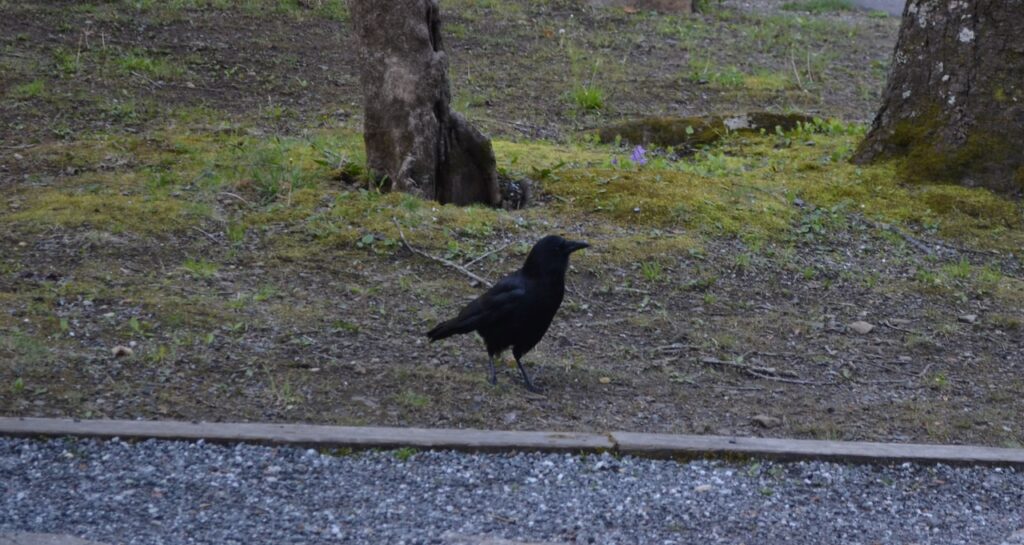

After our first day’s hike we stayed at lower elevations, mainly in the coves. We were rewarded with a profusion of wildflowers in waves of peak blooming. The trilliums were plentiful and delightful. The Kanati Fork Trail was particularly glorious, and after leaving the trailhead on Hwy 441 behind, the forest world was quiet, with the occasional murmurs of the gentle waters of the little Kanati Fork stream in the background.

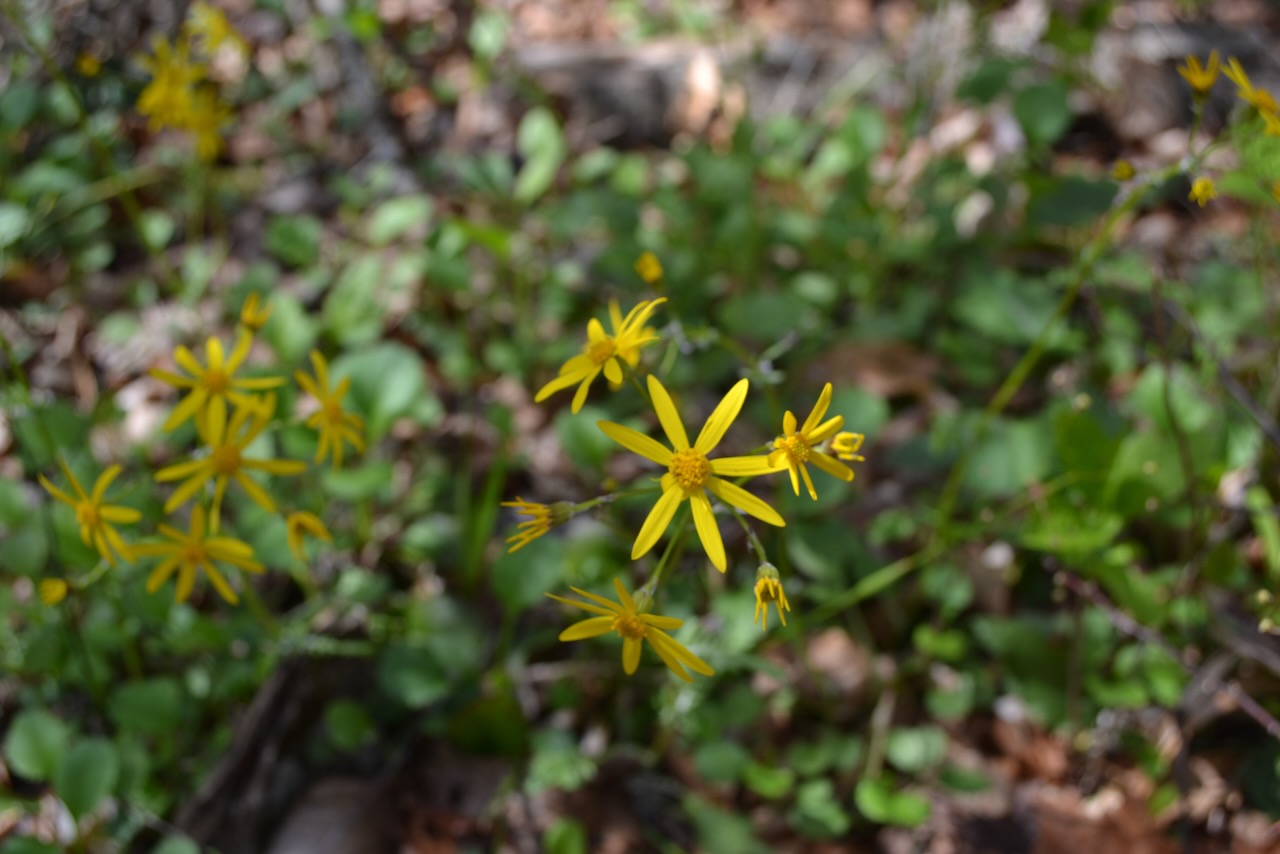
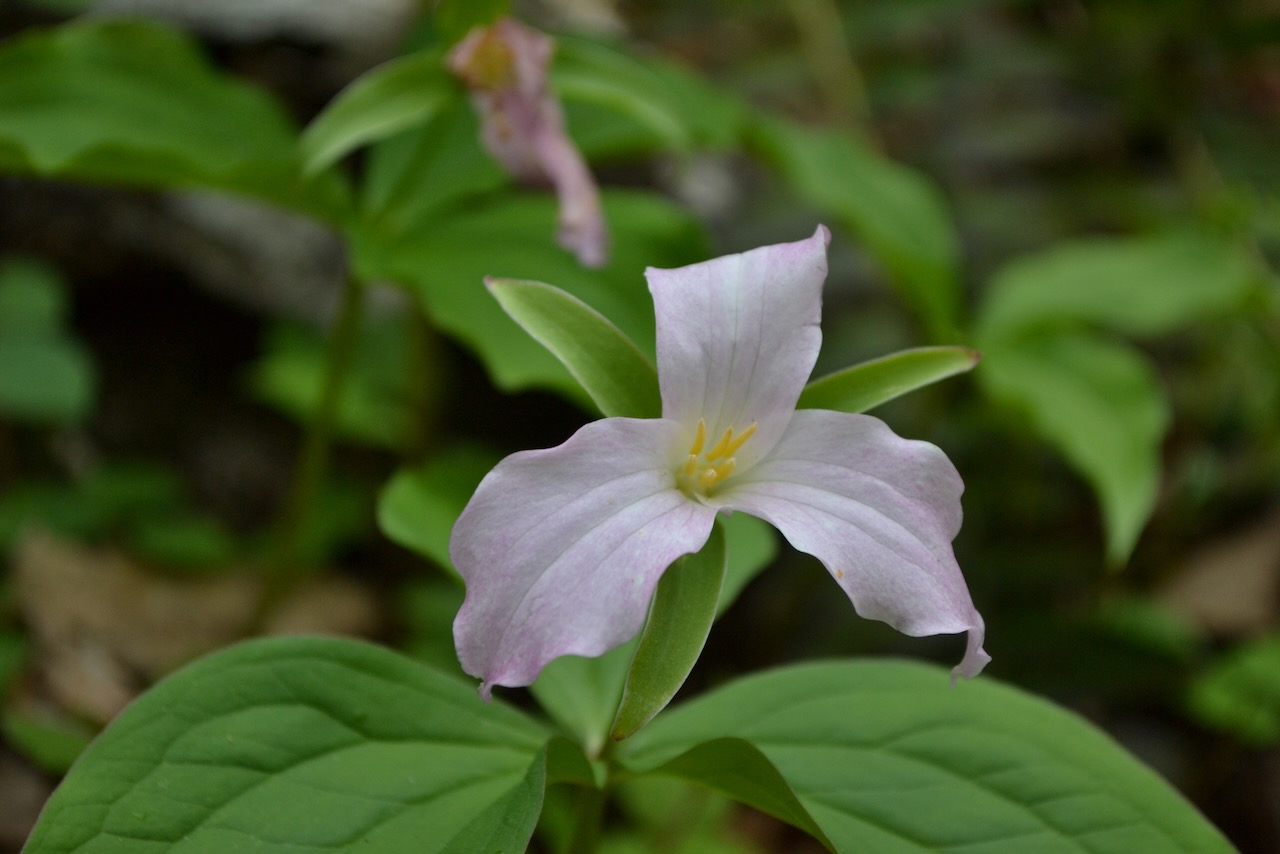

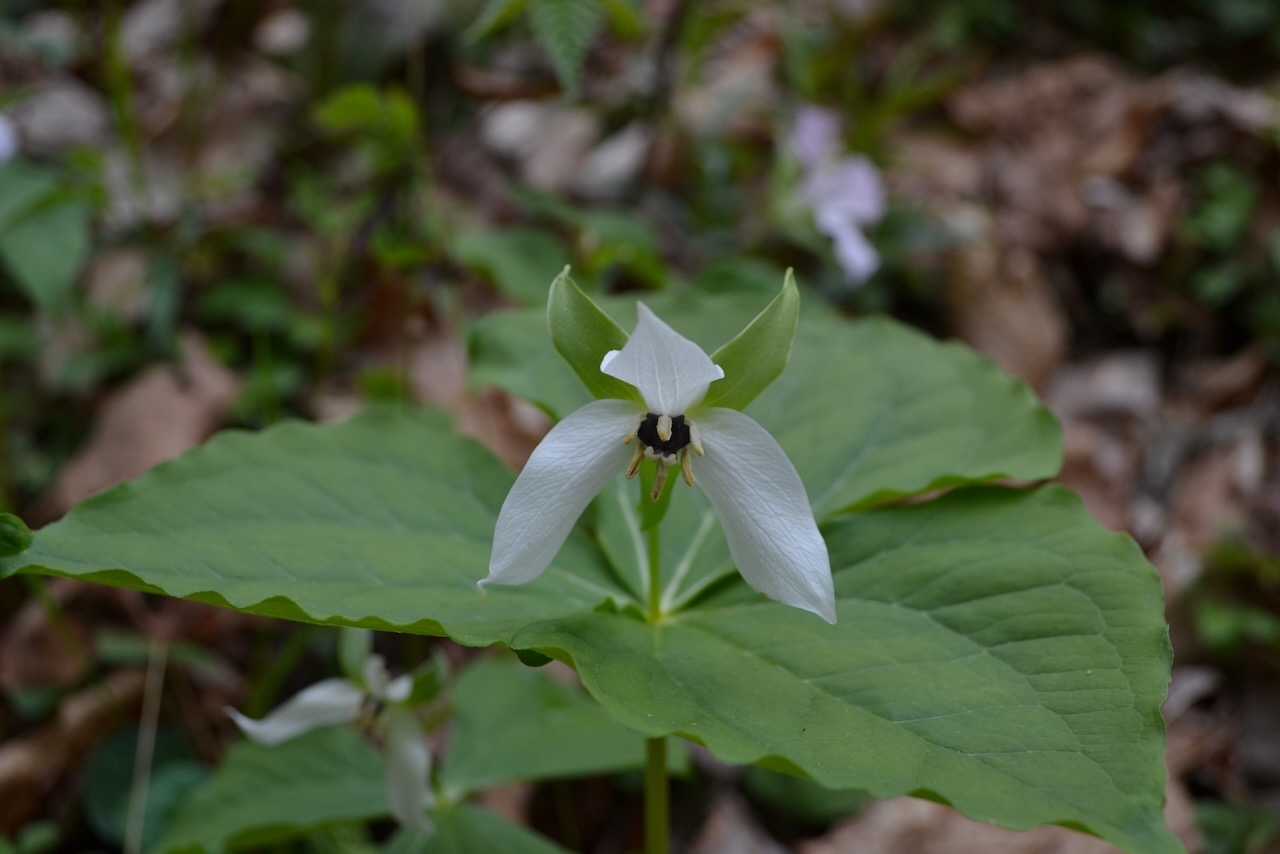
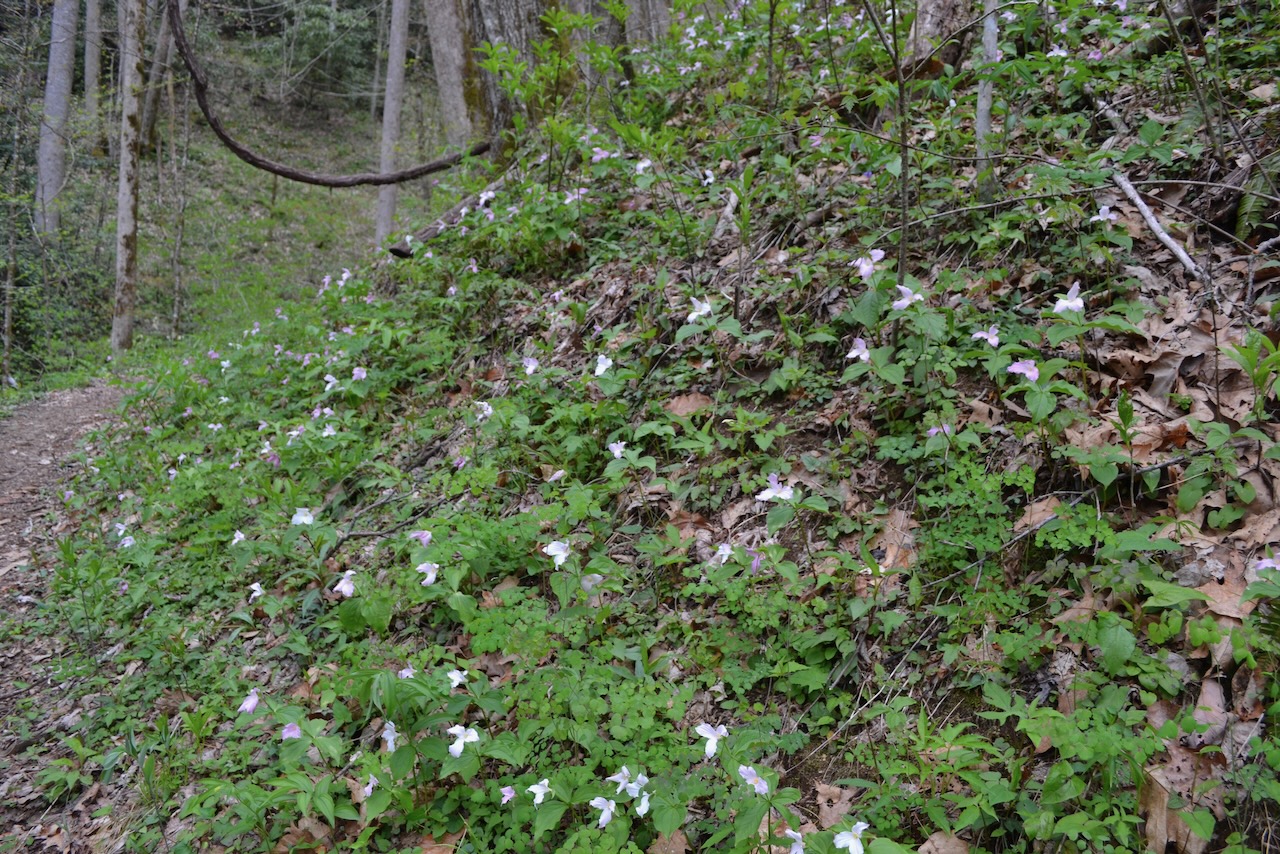
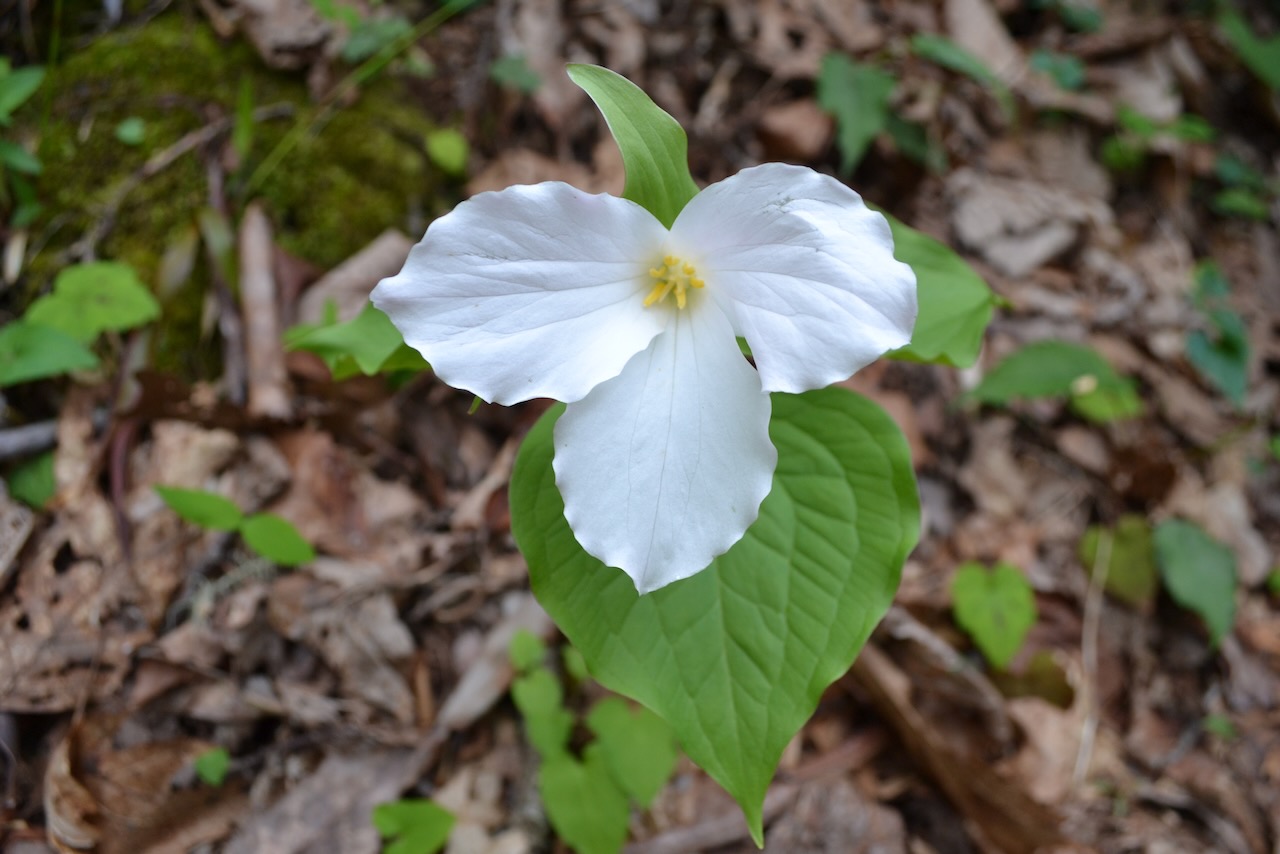
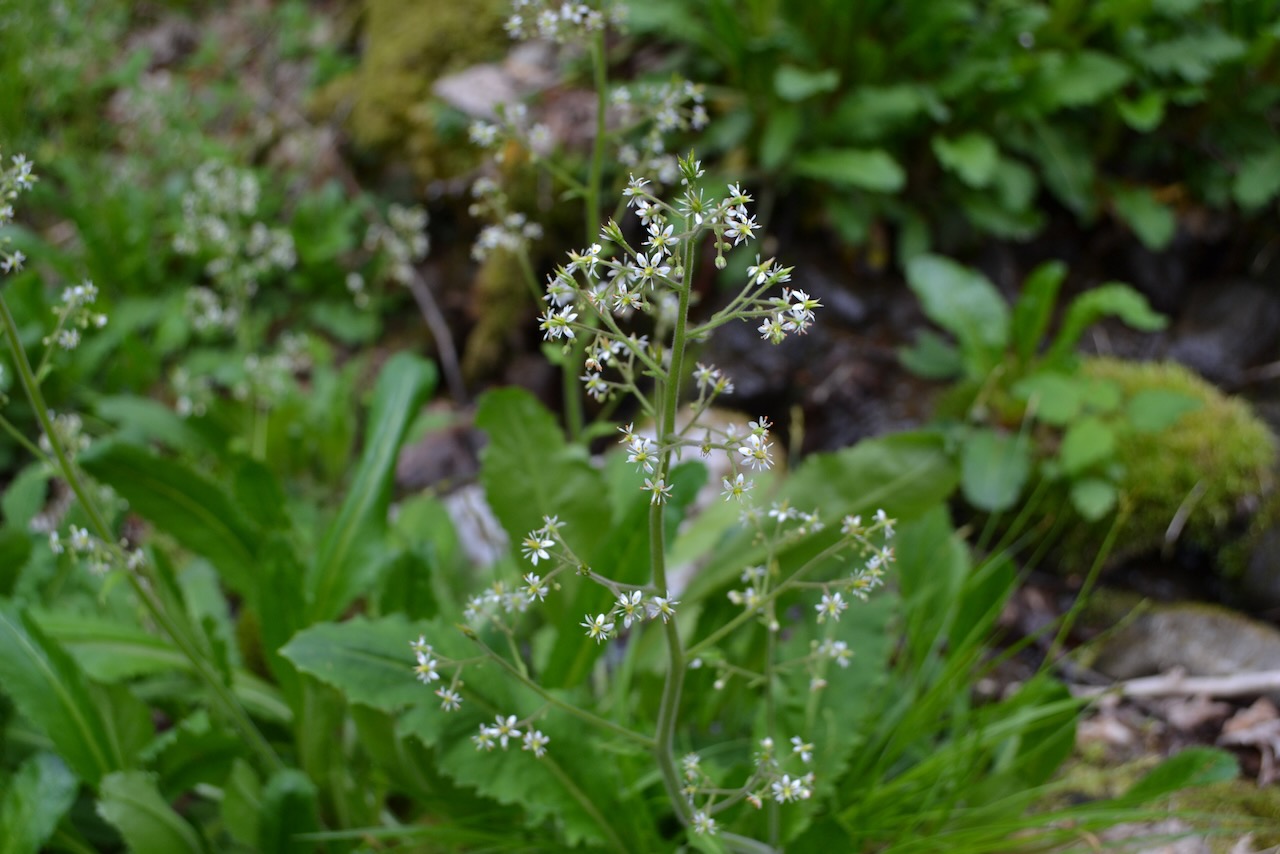
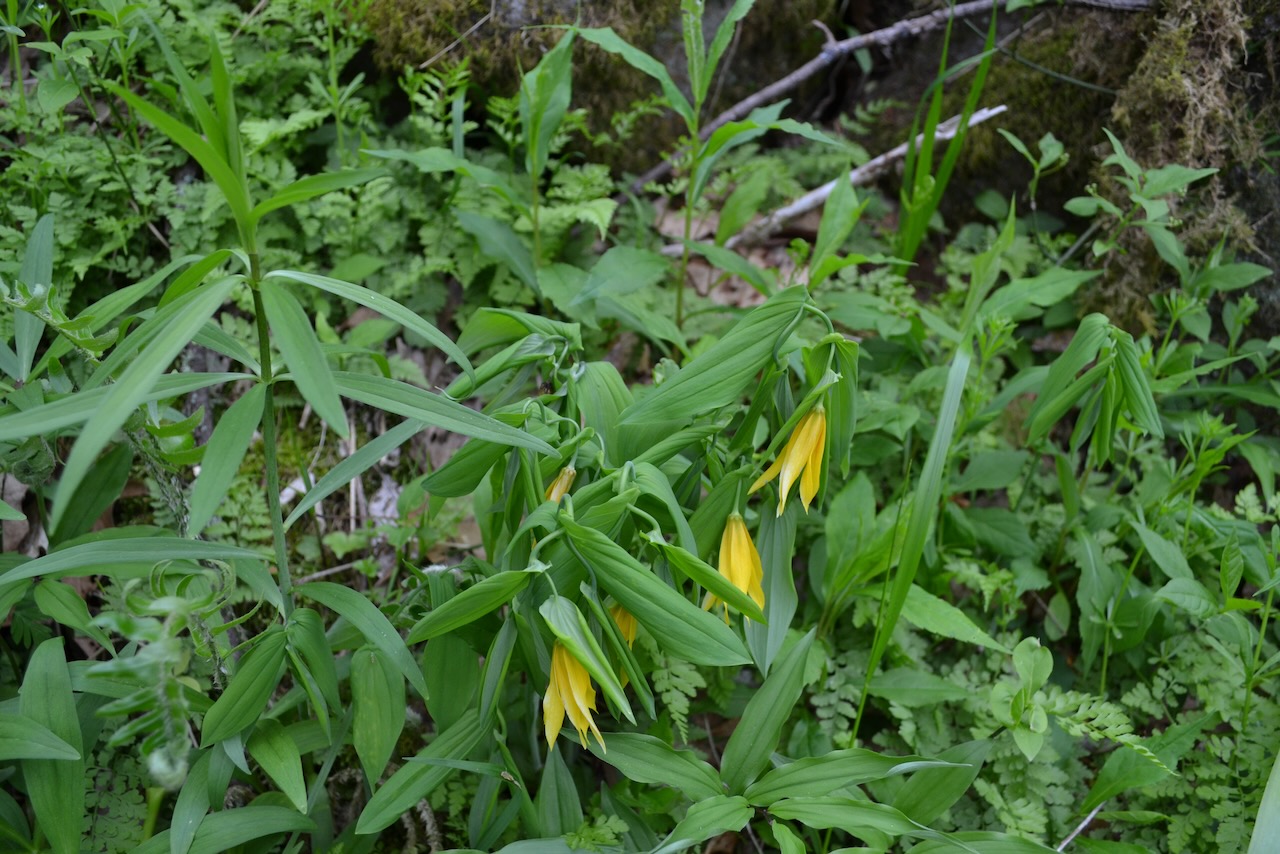

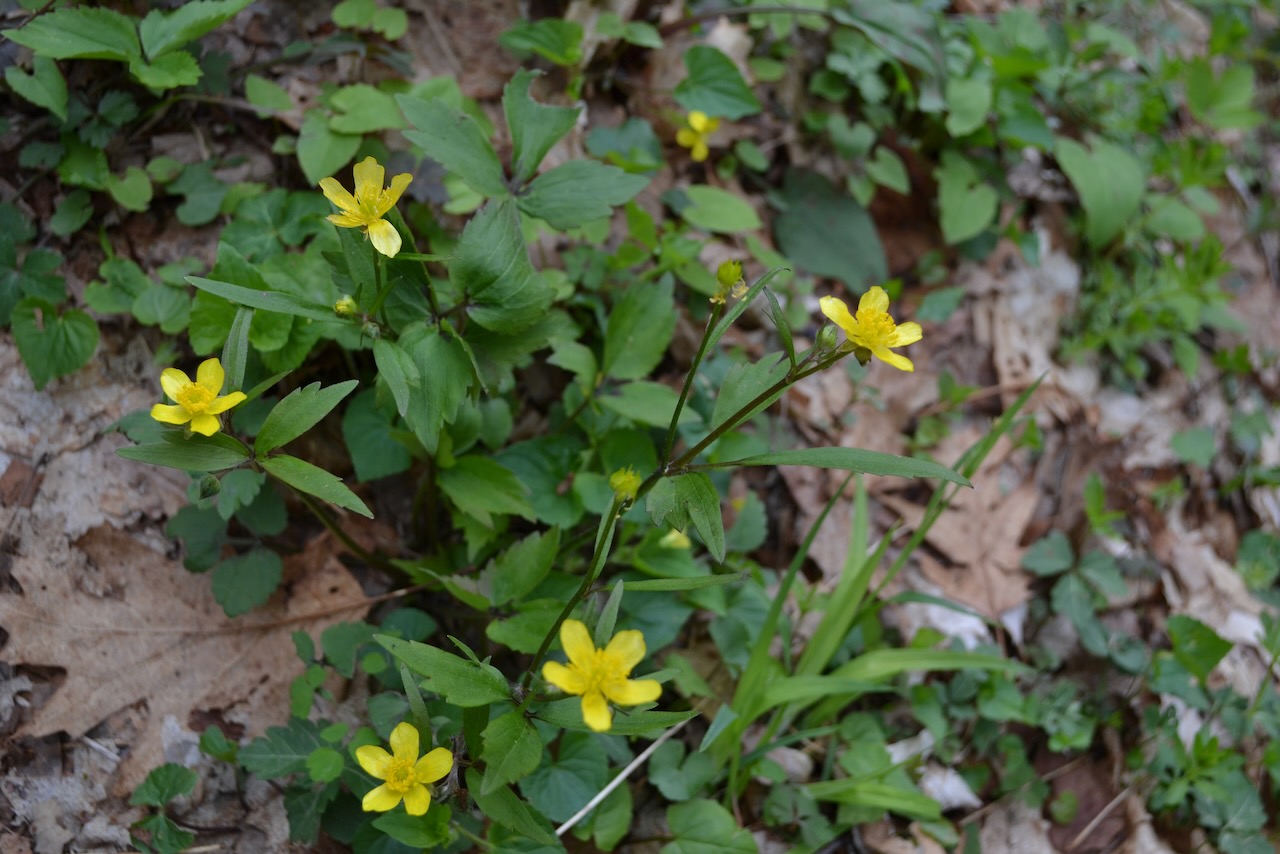
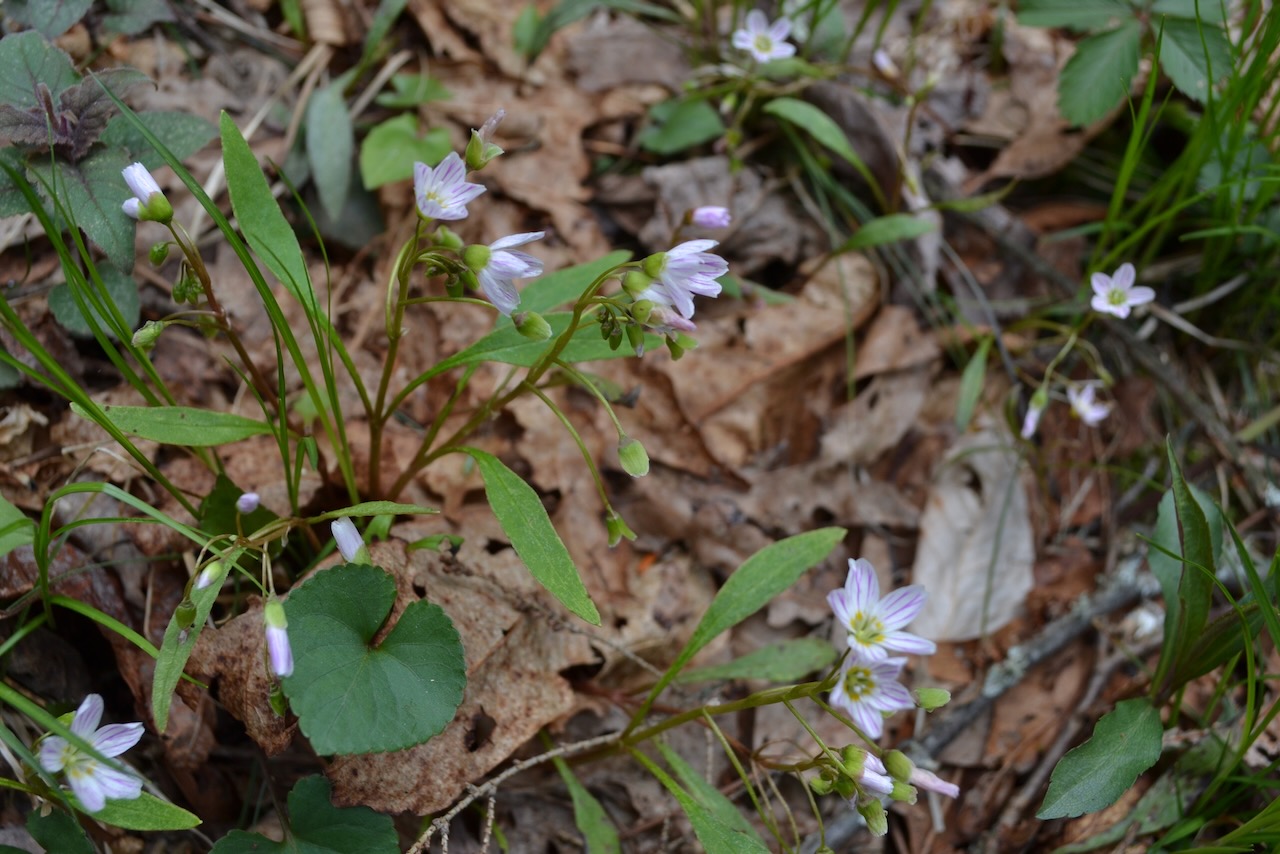

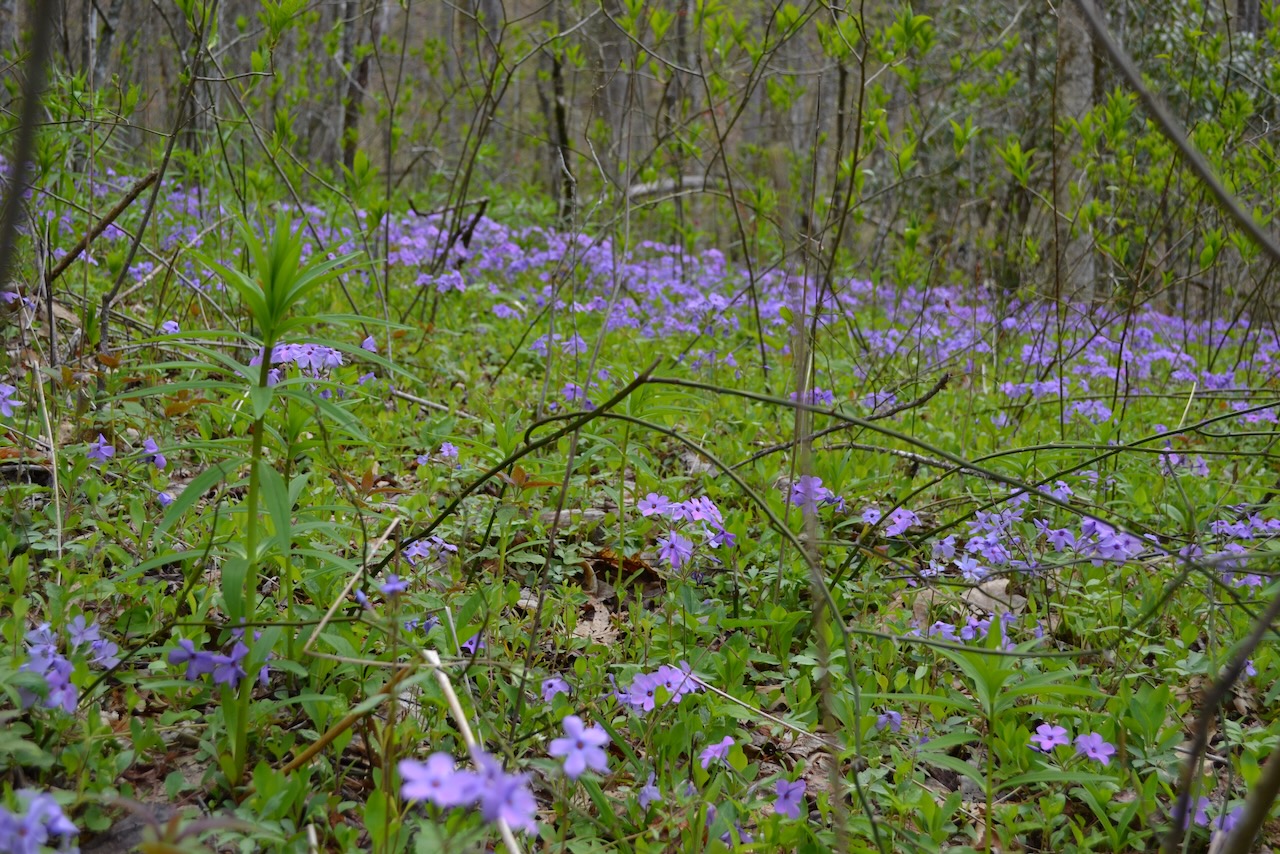


The name “Kanati” intrigued me, as did others indigenous place names, and I went to the Oconaluftee Visitor Center to ask questions (“Oconaluftee” is the Cherokee word for “by the river”.) The person fielding questions at the desk was a young man wearing a Americorps shirt, and his knowledge base was impressive. “Kanati” is the name in the Cherokee legend for the first man. He explained further that the Cherokee word would have the “Gwa” sound rather than “K”. Another Cherokee word with the “ee” ending and meaning “fringe standing erect” is Cataloochee. That place would be our destination in the spring of 2023 for more Smokies adventures.
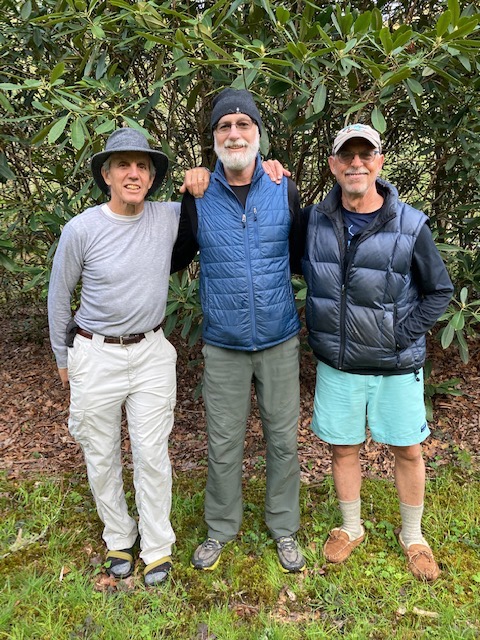
Glad you had a safe – though chilly – trip and the tree missed your campsite! Love all the pictures as reminded me of my LeConte adventure.
Ah yes your LeConte adventure. Planning your next?
LOVED the photos and am amazed by the number of folks you encountered on thru hikes!! G
Yes it is a busy time up on the AT with people going north (and south). April is definitely a swing month in terms of weather, but up on that ridge you have to prepare for the worst. Beauty everywhere – up on the ridge, and down in the coves.